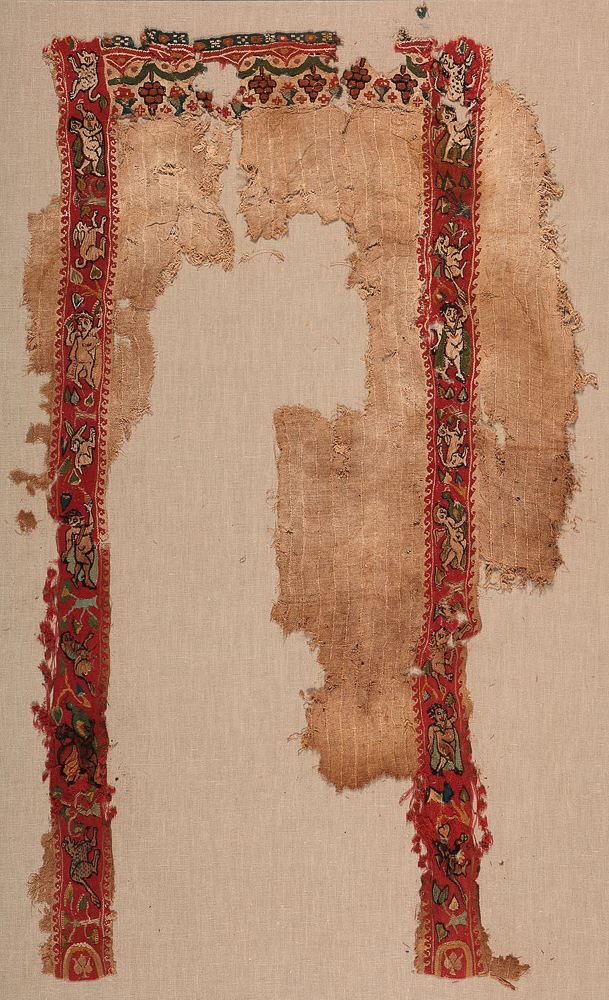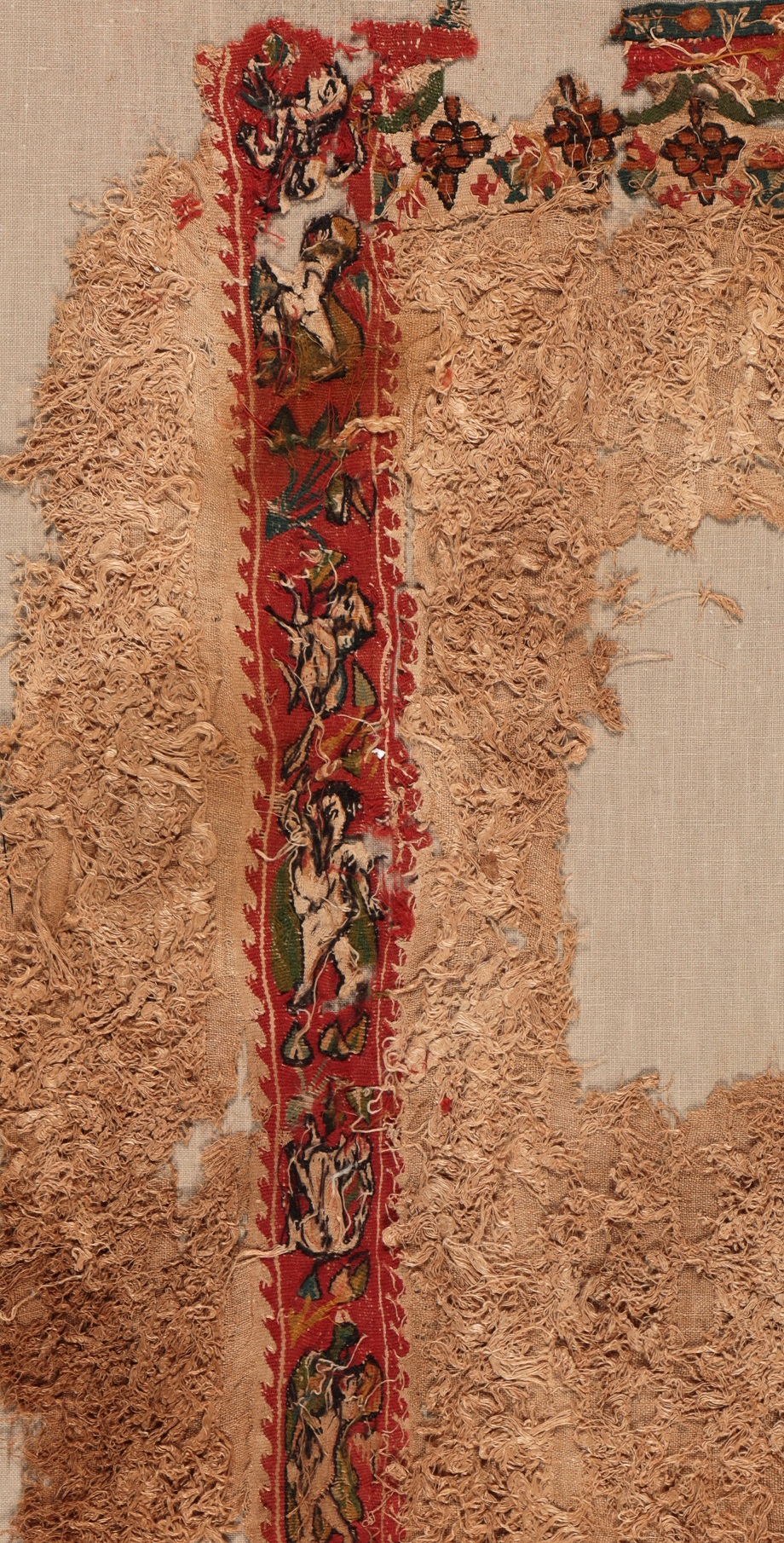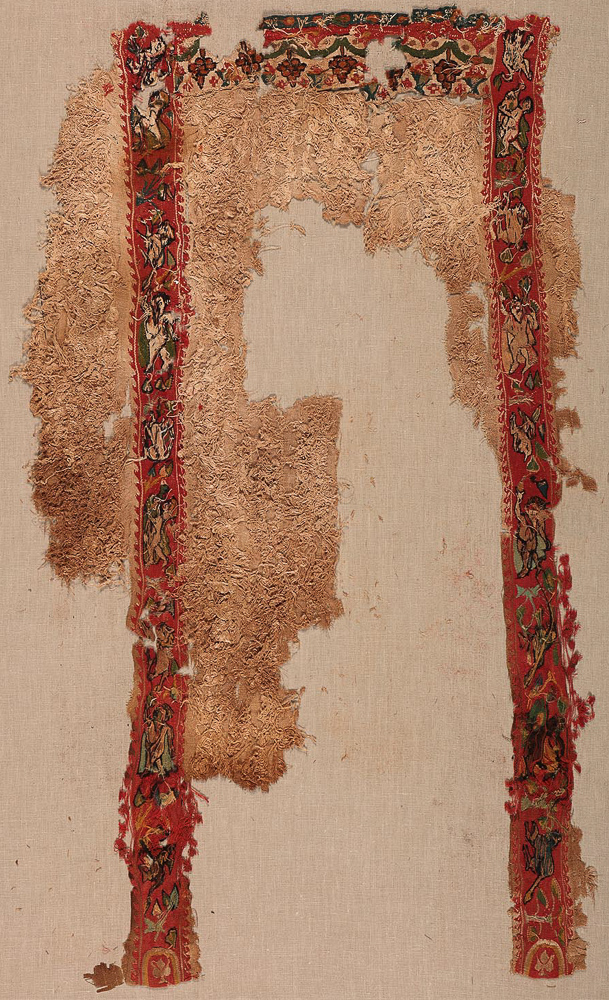The length of the original clavi and the neckline of half of the tunic have been preserved. The inner part has rows of ecru linen loops. Small nude putti, some standing, others swimming and holding a duck, alternate with lions, hares and aquatic plants on the clavi. The neckline has a frieze of geometric motifs, beneath which are baskets of fruit or flowers, festooned with garlands of grapes.
Origin:
Egypt
Date:
6th - 8th century
Material:
Linen and wool
Dimensions:
Warp: 39 cm, weft: 66 cm
Comparisons:
MAK, Vienna, inv. T 448.1+2-1883: inside loop-lined.
Provenance:
Collection Coptic textiles Fill-Trevisiol: donation
Location:
Musée royal de Mariemont
Woollen tapestry inwoven in linen cloth
I. Ground weave
Warp:
natural-coloured linen S: 22/cm
Weft:
natural-coloured linen S: 20/cm
Weave:
tabby
Other features:
self-bands every 13 pick of the tabby weave. Self-bands: in one pick: 2 paired yarns continue with tabby weave and in the same pick 2 paired yarns making slip loops at the reverse side of the weave
II. Tapestry areas
Warp:
linen S
Weft:
red, black, blue, orange, brown, yellow, pink and nuances of green wool S: +/- 40/cm; natural-coloured linen S: 44/cm
Weave:
extended tabby 2/2
Ribs per cm:
11-12
Sewing Yarn:
linen S2Z
Special techniques:
slit tapestry, eccentric weft, vertical weft brocading
Dyes analysed:
Weft thread: red Z wool: madder


